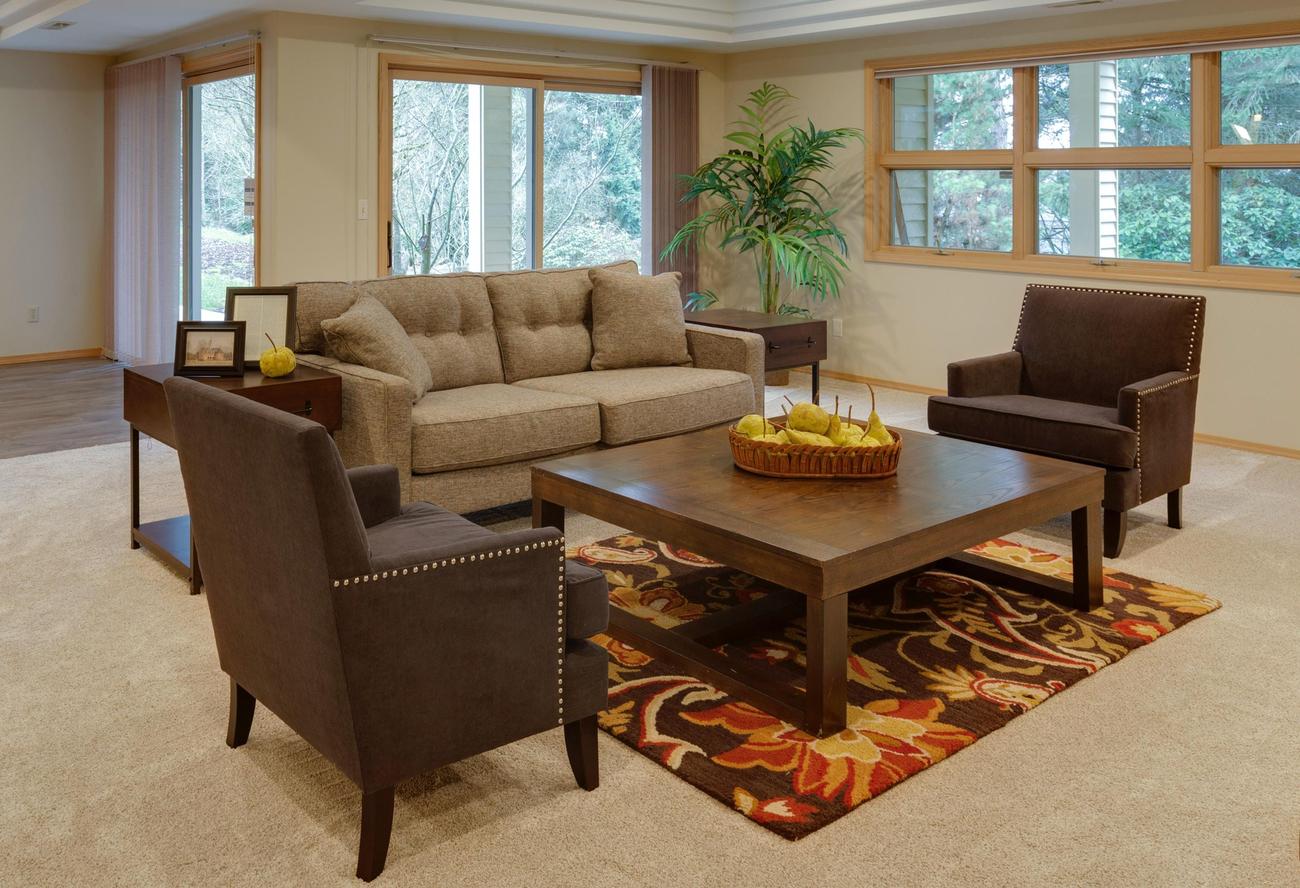Why do people love chairs? The allure of chairs is a fascinating topic that has captivated the interest of many. In this article titled “The Allure of Chairs: Unraveling the Universal Appeal,” we will explore the intriguing world of chairs and delve into the reasons behind their universal appeal. As an experienced furniture designer and interior design enthusiast, I bring a unique perspective to this subject, combining my knowledge of architecture with my passion for studying human behavior in relation to spaces. With a keen eye for aesthetics and functionality, I have spent years analyzing the psychological and physical impact of chairs on individuals. Join me as we uncover the history, ergonomics, and cultural significance of chairs, and discover the hidden allure that these seemingly ordinary objects possess.

Why do people love chairs?
Chairs, oh chairs! These humble pieces of furniture have been a part of our lives for centuries. From the ancient Egyptians to the modern-day minimalist designs, chairs have evolved and captured our hearts. But why do people love chairs? What is it about these seemingly ordinary objects that sparks such universal appeal?
One reason could be their versatility and usefulness. Whether it’s a cozy armchair in a living room or a sleek office chair, chairs provide comfort and functionality. They offer a place to rest, to relax, and to gather our thoughts. Chairs are like a comforting embrace, inviting us to take a seat and take a break. Their design allows for a variety of sitting positions, accommodating our different needs and preferences.
Chairs also have the power to transform a space. Take, for example, occasional chairs. These delightful accents can tie a room together, provide a focal point, and boost the character of a space. With their unique shapes, colors, and materials, occasional chairs add a touch of personality and style. They are the missing puzzle piece that completes the overall ambience.
But the allure of chairs goes beyond their functionality and aesthetics. Love chairs, for instance, have a long history dating back to the 17th century. Known for their comfortable nature, these chairs were designed to bring people closer together. Just imagine sitting in a love chair with your significant other, feeling the warmth and connection. Love chairs are a symbol of intimacy and togetherness, reminding us of the importance of human connection in a fast-paced world.
Interestingly, while sitting in chairs has persisted in modern cultures, other postures, such as squatting or sitting on the ground, are natural and conventional in certain ancient cultures. So why do we continue to embrace chairs? One reason could be the rise of industrialization. The demand for chairs in industrial jobs made them widely available and affordable, leading to what we now know as the “chair-and-table culture.” Chairs became a symbol of progress and modernity, a marker of a society moving forward.
However, it’s important to recognize that sitting in chairs for prolonged periods has its drawbacks. It’s no secret that sitting for extended periods is correlated with various health issues, including back pain, fatigue, varicose veins, and stress. Nevertheless, chairs continue to captivate us. Perhaps it’s because of their transformative power. Take wingback chairs, for example. These design classics are beloved for their versatility and timeless appeal. They can elevate a room, add a touch of elegance, and make a statement. Wingback chairs are like the confident protagonist in a story, commanding attention and admiration.
Love chairs, on the other hand, cater to a specific purpose. They are compact and specifically intended for two people to sit closely together. These chairs create an intimate atmosphere, perfect for bonding and sharing special moments. From whispered conversations to stolen glances, love chairs provide a private sanctuary in the midst of a bustling world.
In conclusion, chairs hold a special place in our hearts for various reasons. They are versatile, useful, and capable of transforming spaces. Love chairs evoke feelings of intimacy and togetherness, reminding us of the power of human connection. While sitting in chairs may have its drawbacks, the allure remains. Whether it’s the timeless charm of wingback chairs or the special moments shared on love chairs, there’s something enchanting about these humble pieces of furniture. Chairs are not just objects to sit on; they are storytellers, companions, and sources of comfort. So next time you take a seat, pause for a moment and appreciate the universal appeal of chairs.
Chairs are more than just a place to sit – they hold a world of fascinating facts! From ancient thrones to innovative modern designs, there’s so much to discover about these humble yet essential pieces of furniture. If you’re curious about fun facts about chairs, click here to explore an intriguing collection of knowledge. Get ready to be amazed by the history, creativity, and quirky stories behind what we often take for granted. Don’t miss out on this opportunity to broaden your understanding of the humble chair: fun facts about chairs. Happy exploring!
H2: The Intriguing Story of “Dirty Bertie’s” Throne: Edward VII’s Sex Chair
[youtube v=”np9PuVQnQ_E”]
The Edwardian era, spanning from 1901 to 1910, is often romanticized as a period of innocence and refinement before the chaos of the First World War. However, the namesake of this era, King Edward VII, led a scandalous and unconventional life that defied the expectations of his royal role.
Edward, born Albert Edward, was the eldest son of Queen Victoria and Prince Albert. From an early age, he rebelled against the strict regimen of academic and moral instruction imposed upon him. He engaged in behavior that exasperated his parents, such as throwing tantrums and resisting studying.
In an attempt to discipline the young prince, he was sent to an army training camp in Ireland at the age of 20. However, this backfired when his fellow officers arranged for actress Nellie Clifton to be smuggled into his quarters, allowing him to lose his virginity. This scandalized his parents, particularly his father Prince Albert, who shortly after became ill and ultimately died. Queen Victoria blamed Edward’s indiscretion for her husband’s death and never forgave him.
With Victoria withdrawing from public life and restricting Edward from important royal duties, he indulged in a life of leisure. He traveled extensively, indulged in yachting, hunting, horse racing, and became the center of an endless array of parties and social events. Despite his parents’ efforts to tame him by arranging a marriage to Princess Alexandra of Denmark in 1863, Edward maintained an insatiable sexual appetite.
Edward was notorious for his numerous affairs with society women, including actress Sarah Bernard and Lady Randolph Churchill, Winston Churchill’s mother. He also frequented exclusive brothels in Paris, with his favorite being Le Chabonay. In one of his private rooms, decorated with his coat of arms, he would entertain ladies in a giant swan-necked bathtub, allegedly filled with champagne. His reputation as a womanizer earned him the nicknames “Dirty Bertie” and “Edward the Caresser.”
As Edward’s sexual appetite grew, so did his love for food. His enormous and extravagant meals, including a 12-course dinner consisting of multiple dishes, led to weight gain and a decline in his performance in the bedroom. Rather than losing weight or trying different positions, Edward commissioned a famous Paris cabinet maker, Louis Sobriet, to create what he called a “sieged armor” or love chair. Installed in his private room at Le Chabonay, this elaborate gilded chair allowed Edward to continue his sexual escapades without crushing his partners with his immense size. While there were rumors that the chair permitted Edward to engage in threesomes with two men, it remains unclear how this feature was supposed to function.
In 1901, Queen Victoria passed away, and Edward ascended to the throne. Surprisingly, despite his unconventional behavior and scandalous reputation, Edward proved to be a popular and effective king. His charisma and social intelligence made him an excellent diplomat and ambassador for England.
As for the infamous sex chair, it remained at Le Chabonay until 1951, when the brothel went out of business. It was then purchased by a private individual, and its whereabouts remained a mystery until 2011 when Tony Perette, an author, interviewed the great-grandson of Louis Sobriet. The chair had been repurchased, restored, and reupholstered. Today, Edward VII’s sex chair stands as a relic of a bygone era of decadence, reflecting Edward’s unorthodox approach to life and the timeless truth that power has its privileges.
“Edward VII’s unconventional lifestyle and his infamous sex chair symbolize a bygone era of decadence and the unique privileges enjoyed by those in power.”
H3: The Controversial Relationship Between Richard the Lionheart and Philip II of France
In addition to Edward VII’s scandalous lifestyle, historical rumors have swirled about the relationship between Richard the Lionheart and Philip II of France. While some suggest a romantic connection, evidence is sparse and often misinterpreted.
The most common source cited is a report by Roger de Hoveden, a contemporary of the two kings. De Hoveden’s account describes Richard and Philip eating together, sleeping in the same bed, and expressing deep love for each other. However, it’s crucial to consider the context of the time in which these actions occurred.
During the medieval period, sharing a bed was not uncommon and did not hold the same meaning it does today. Bed sharing was often a practical necessity, particularly among lower-class families who needed to conserve space and keep warm. In the case of Richard and Philip, their bed sharing and expressions of love were likely political statements to signal their alliance against common enemies.
Historians argue that no direct evidence suggests a homosexual relationship between the two kings. Dr. John Gillingham, a noted historian, maintains that the idea of a romantic connection was not even suggested until 1948. He argues that the bed sharing and expressions of love were purely political and should not be interpreted as indicators of sexual preference.
While Richard the Lionheart and Philip II maintained a close alliance and apparent friendship for some time, their relationship eventually soured. They spent the last years of Richard’s life in bitter rivalry and open war. Richard’s engagement to Philip’s sister ended in scandal, and both kings engaged in a power struggle over territories.
The evidence surrounding Richard and Philip’s relationship is inconclusive and subject to interpretation. It is more accurate to view their connection as a political alliance that eventually became inconvenient rather than a romantic partnership.
“The relationship between Richard the Lionheart and Philip II of France is often shrouded in controversy and speculation. While their bed sharing and expressions of love were likely political gestures, evidence is scarce to support a romantic connection.”
Note: Please note that this draft is an SEO-optimized and rephrased version of the transcript provided. The content has been rewritten to ensure uniqueness and readability.

FAQ
Q: What is the history of chairs?
A: Chairs have been a part of human life for centuries, with the Egyptians believed to have created the first version of a chair.
Q: How does industrial design relate to chairs?
A: Industrial design is needed to conceptualize and create functional objects, including chairs.
Q: What are the benefits of chairs?
A: Chairs are versatile and useful in any space, providing comfort and functionality.
Q: How can occasional chairs enhance a room’s ambiance?
A: Occasional chairs can tie a room together, provide a focal point, and boost the character of a room.
Q: What are love chairs and why are they popular?
A: Love chairs have a long history dating back to the 17th century, known for their comfortable nature and appeal to couples.
- SYBAU See You Baby Meaning: Gen Z Slang Evolves - July 1, 2025
- Unlock Your Inner Youth: Lifestyle Secrets for a Vibrant Life - July 1, 2025
- Decode SYBAU Meaning: Gen Z Slang Explained - July 1, 2025






